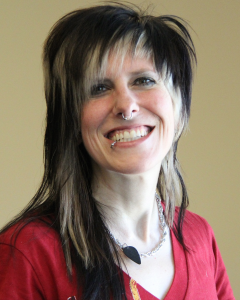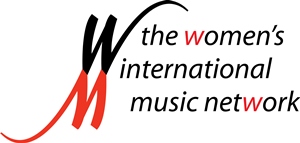The WiMN’s Front and Center is a weekly column that showcases accomplished women who work in the music and audio industries. We spotlight successful female performers, manufacturers, retailers, educators, managers, publicists, and everyone else in between. Want to be featured? Learn how here.
Front and Center: Sound Designer, Educator and Syndicate 17 Owner, Chanel Summers
 Chanel Summers is a powerhouse composer, drummer and educator, and a true pioneer in the world of video game design.
Chanel Summers is a powerhouse composer, drummer and educator, and a true pioneer in the world of video game design.
As the owner of Syndicate 17, Summers draws from her experience in audio and game design to develop fresh, innovative, and distinctive compositions and sound designs for film and TV, advertising, video games and more.
Summers is an education advocate as well. She regularly lectures and teaches the art of video game audio at a number of prestigious universities, conferences and events around the world. Most recently, Summers developed a unique game audio design workshop that she teaches at an all-girls school in Seattle.
Find out more about Chanel Summers and Syndicate 17 at syndicate17.com.
WiMN: What led you to working in audio and eventually co-founding Syndicate 17?
CS: I have worked for most of my professional career in the video games industry, focusing primarily in the area of interactive audio for digital media.
However, I started off my career as an engineer and ultimately was drawn to the more creative aspects of the industry over time. First as a game designer and producer at some early innovative game companies such as Mindscape, Velocity and Mattel Media where I worked on everything from 3D vehicle simulations, to 2D character platform games, to even hardware peripherals.
But I really discovered my love of the intersection between technology and creativity at – of all places – Microsoft, where I shipped their first ever massively-multiplayer online game, Fighter Ace, before moving onto the Windows/DirectX side of the house and working on the DirectX Audio technologies.
There was something about the first demo I saw of a technology called DirectMusic that just changed my life. I can’t really explain it, but I knew that DirectMusic, and other innovative interactive audio technologies such as DirectSound3D, had the potential to change how we interact with technology on an aural – and deeply primal – way. Remember, that this was at a time when the Mac really ruled the audio world, and the idea of using Windows as a platform for audio creation was kind of heresy.
I then became a member of the original Xbox team and helped to design the audio system for that groundbreaking console and create the first ever support team for content creators, aimed at sound designers, composers, game designers, and graphic artists to assist them in taking full advantage of the Xbox’s capabilities. This was something that had never been done before. We wanted to be able to help the content creators be strong and really take advantage of the technology and be super-creative, successful, and ultimately usher in the next generation of gaming.
So, I was doing a lot of work with others in a kind of advisory and educational capacity around the world to make their audio and content in their products better – which I absolutely love to do.
But I wanted to take my knowledge and experience of dynamic, adaptive audio, sound design, music composition and songwriting, and create and produce audio for projects myself. So after I left Microsoft, I worked on more direct applications of audio, first as a recording and touring drummer and then at my own company, Syndicate 17. So now I own and run my own audio production company, lecture and teach the art of video game audio at a number of prestigious universities, conferences and industry events all around the world, and am the Chief Product Officer for Score Music Interactive, an innovative interactive music production technology company based in Ireland.
WiMN: Tell us about some of the companies/projects you’ve provided music for with Syndicate 17. Is it a challenge to write for such diverse clients?
CS: I am doing a lot of work with technology start-ups that really want to do something truly special with audio. One of the projects that I worked on recently was particularly exciting to me. It was a demo called “Leviathan: The Evolution of Storytelling” that was produced for Intel. This is a very cool, large-scale augmented reality project that will change the way stories are told and how games will be played going forward, and was inspired by the rich steampunk world of Scott Westerfeld’s novels. “Leviathan” is is a transmedia storytelling experiment that creates an immersive world in which creators and audiences can engage and physically explore a fictional, digitally constructed environment.
My team and I were called upon just a couple of months before this year’s Consumer Electronics Show to create the audio design, musical score, and mix for “Leviathan” so that Intel could feature the demo in their CEO’s keynote speech and also show a more developed out and longer version of the project in Intel’s booth at the conference.
In a very short amount of time we had to create this full audioscape for an extremely ambitious and large-scale project, so we developed a very successful iterative audio approach. We also did a lot of work with the manipulation of frequencies in order to communicate emotions & feelings within a noisy conference background environment.
On the other extreme, I also was responsible for audio (both sound and music) for a not-yet-released gestured-based children’s game, which required me to create a lot of different fun and whimsical musical styles for each of the levels while also creating all the original sounds for the characters and their actions.
I believe the fact that I have worked in so many diverse areas of both video game and audio production has really given me a personal understanding of all sides of most issues that I encounter on a daily basis — having been a game producer and designer (of both software products and hardware peripherals), an audio technology evangelist, having helped to define revolutionary audio platforms, performed as a professional recording and touring drummer, and now as a sound designer, composer, songwriter and educator.
All these experiences, working in these different capacities with a diverse group of people, have given me some very unique perspectives and forced me to develop some unique skills and work systems. For instance, Syndicate 17 employs a wide-ranging suite of processes and technical tools I put into place that allow the company to manage complex audio projects and to complete them in record time, thanks to a unique combination of highly focused, results-oriented project management and extremely creative attention to detail. Also, thanks to the diverse range of experiences I’ve been fortunate to take part in, I can put together full sound designs for technical projects with little to no impact on the development team, even before they’ve produced such things as animations or timing notes.
WiMN: What is your composing/songwriting process like?
CS: My process is definitely project-dependent but it seems that our clients always have one thing in common: they want lots of very high quality and dynamic audio and almost always come to us at the last minute. That’s why I’ve had to develop and put in place a suite of project management systems, processes and technical tools that are proprietary to the company and allow us to deliver quickly and with high quality.
Creatively, I approach my pieces with emotive intent. Songwriting-wise, I’m a very melodic-based composer. I like to develop out everything around the main melody line. Everything I do is about telling a story and taking the listener on a journey.
WiMN: Tell us about your drumming career.
CS: After leaving Microsoft, I focused my creative passions into drumming – a lifelong aspiration – and quickly established myself as a mainstay in the Seattle music community. I was known for my energetic stage presence, impeccable timing, and extremely creative, musical drum parts and was a highly sought-after performer, recording frequently and performing professionally in a number of nationally touring bands, working alongside such bands as Missing Persons, The Dreaming, Smile Empty Soul, The Last Vegas, Endless Hallway, and Vast, and showcasing in festivals ranging from CMJ to SXSW.
WiMN: Who are some of your heroes in the industry – musicians or otherwise?
CS: Walter Murch, one of the most influential editors and sound designers to work in cinema during the past 30 years, is a pure genius! The innovative techniques he’s created and developed over the years (for example, how to lay out the sonic environment and mix it effectively) continue to amaze me. He’s widely acknowledged as the person who coined the term “sound designer.” Most importantly, his ability to communicate a film scene so deftly with sound, using sound metaphorically through the intential use of ambiguity, means he is always able to craft a deep and meaningful narrative where we, the audience, can still get glimpses into character’s mindsets and motives.
Orson Welles is another hero. Many people think of him as an actor or a director but his pioneering work in the area of sound and storytelling with films like Citizen Kane and Touch of Evil changed the perception of cinema sound forever. Welles had started innovating in radio which, of course, communicates all its rich storytelling exclusively through the use of sound. That medium allowed Welles to hone his craft and perfect many of his storytelling techniques by activating the listener’s imagination.
He took the limitations of radio and turned them into advantages. And then he took the storytelling devices he learned and used in radio (and on the stage before that) to film. He distorted sound to convey where characters were relative to the “listener.” He faded volume to suggest distance, added echoes to imply space, and was the first to use filters to imply an interior monologue: all techniques we take for granted today in all forms of recorded media. But it was Orson Welles who really refined those techniques in his films.
WiMN: What is some advice you’d offer to a young woman pursuing a career in music and/or video game audio?
CS: The advice I would give would be the same to both young women and men, and that is have a diversity of experience — to study everything (not just audio design and music composition) and to not have a narrow focus. Being narrow isn’t good for you as a person and it isn’t good for the industry. Don’t just focus on the technical aspects of audio content creation (e.g. recording, editing, processing and mixing). Also examine the aesthetic role that audio can play in the game design process and how audio can achieve a level of art. Aspiring audio designers need an equal measure of both aesthetics and technical competency in order to succeed in the workplace.
The people that will push game audio design are ones that are well versed in a number of subjects. Games and game audio are only going to get better and break boundaries when people have a fresh, multi-disciplinary approach. If you take a look at the discipline of sound design, it is a multi-disciplinary field. You want to understand acoustics. You want to understand psychology. You want to understand physiology. Sound manipulates the mind and it manipulates the body. I want the sound designers of tomorrow to understand literary and filmic devices. I want them to understand painting, art, opera, etc. I can’t say enough that, when I’ve heard students that have said, “I’m going to take a psychology class. I’m going to take a class in ceramics.” That’s perfect. It will make you a better and broader person.
The folks that are going to push the boundaries are the ones that aren’t constrained by the rules. They are the ones that are going to do something cool. They’re going to push the industry. Innovation comes from non-traditional people who explore unorthodox paths. And myself, as a sound designer, composer, interactive game audio technologist and educator, I, personally, rely daily on an understanding not only of technology, acoustics and physiology, but also of artistic experimentation and creative problem solving.
WiMN: Can you share your experience as a woman in the industry? Have there been any challenges?
CS: To be frank, my experience as a woman honestly wasn’t different at all from that of my male colleagues. At the time, it didn’t really dawn on me or make a big impact on me that the fields or areas I was interested in were male-dominated. I think I have always been more attracted to those fields, from game design and game production, to technology development, to audio design and audio production, and even to drumming – all traditionally male-dominated. I just wanted to do what I wanted to do. And I actually enjoyed working with and competing with men. But I have always been comfortable in my own skin and this just seemed to be the natural order of things.
That said, as a woman who has built her own career on a platform of game audio, game design and game production, I am passionate about programs that teach and empower women to follow a similar path. As there are such few women in the field of video game audio, fewer are even aware of the opportunities. I am on a mission to try and change that. So, I am trying to introduce this field as a career option to young women and show that women can lead in this field and be highly successful — and perhaps even change the complexion of the video game industry. The reason this is so important is that for an industry or a creative medium to achieve its full potential, it must draw strength from diversity — a diversity of backgrounds, cultures, perspectives, and experiences. Each person approaching opportunity from a different starting point keeps things fresh, vibrant, exciting and new.
WiMN: Tell us about the “Artistic Expression in Game Audio Design” workshop that you are currently teaching.
CS: I am teaching the workshop at Forest Ridge School of the Sacred Heart, an all-girls school in Seattle. It is centered on giving young women an artistic and technical foundation in audio for interactive media and exposing them to the career possibilities in video game audio.
This workshop introduces students to the possibilities and potential of audio and provides them with a foundation for crafting deeper emotional resonance by focusing on the principles of audio aesthetics and supplies a rich toolkit of artistic techniques derived from examples found in nearly all forms of art (whether it be painting, sculpture, literature, cinema, radio, etc.).
The course aims to demonstrate how sound can be utilized in the design process as a fundamental storytelling agent, opening up previously unexplored paths in order to create truly remarkable works of art. I want to point out that this is a very experimental class. Not your typical, run-of-the-mill “how do we make audio for games” class. It focuses on the aesthetics and artistic side of working with sound. It’s a very “mad scientist meets art” type of class. I also want to point out that this workshop is incredibly unique and there is nothing like it of its kind, as it is based on the class that I personally created for USC’s Interactive Media & Games Division in the School of Cinematic Arts. I took the actual semester long course that I teach at USC and made it into an intensive one month long workshop for Forest Ridge.
And even if my students don’t choose to go into the field of creating audio for video games, they will be able to use the skills learned in this workshop to enhance their learning experiences in other areas, as we will be fostering strong skills in the areas of critical listening and analysis, technical and analytical writing, creative thinking and problem solving, communication and expression, and scientific and artistic experimentation, which are important skill sets for any career path that one might choose. And they will definitely learn how to collaborate and work in teams which again is an incredibly important skill for whatever endeavour they take on.
WiMN: What’s in store for you for the rest of 2014?
CS: 2014 is shaping up to be a very busy and very exciting year! I have a bunch of projects coming up where we will be working on sound design focused around the emergent technology space, as well as large-scale installations for various types of commercial clients.
I’m looking forward to continuing my focus on the academic space, working with prestigious universities all around the world. In fact, at this very moment I’m in Paris, presenting to and working with PhD students at a conference called DE-MiniTED2014 that focuses on the digital economy and explores ideas of technology, entrepreneurship, and design. As soon as I get back to the US, I will shift my focus to a brand new audio conference called A3E on whose advisory board I serve. What’s really exciting about the next few months is that it will allow me to combine my consulting, academic and production work in a way that I personally find extremely fulfilling.
Enjoy this article? Become a member of the WiMN today! It’s free, and you can signup here>>








